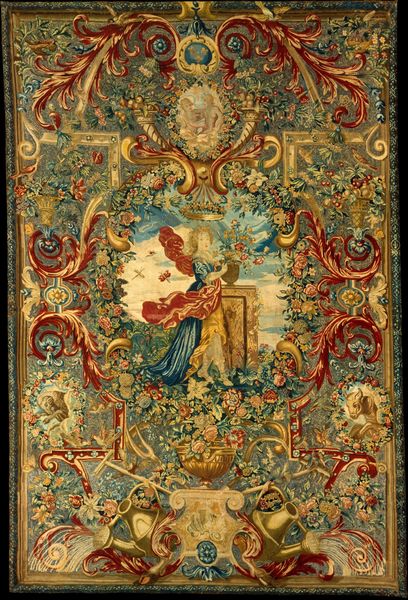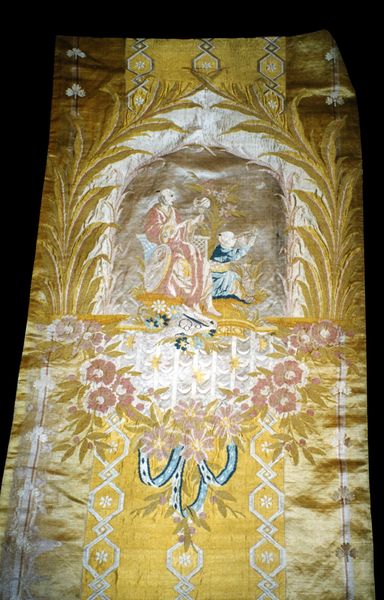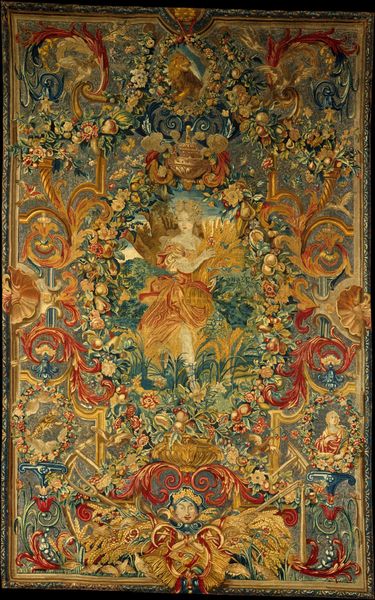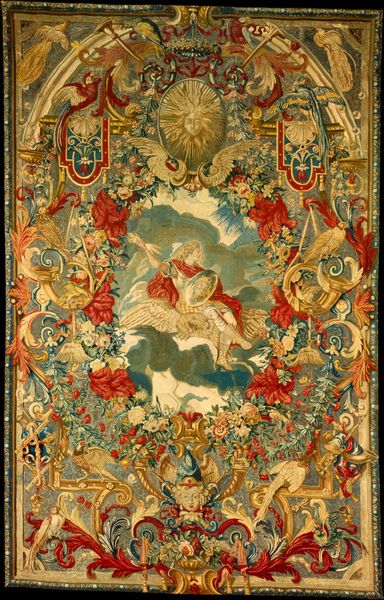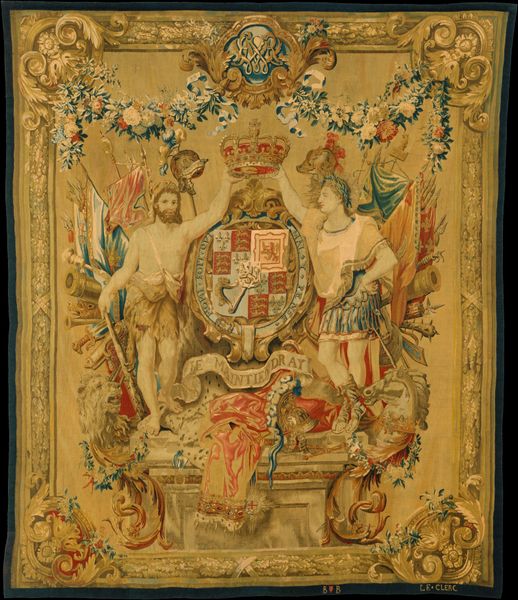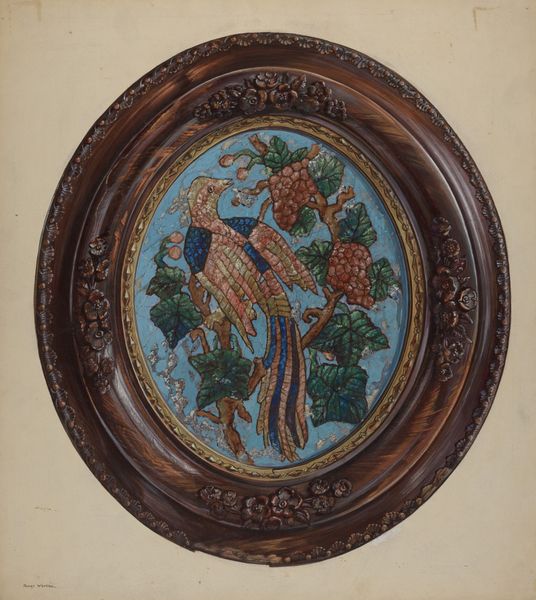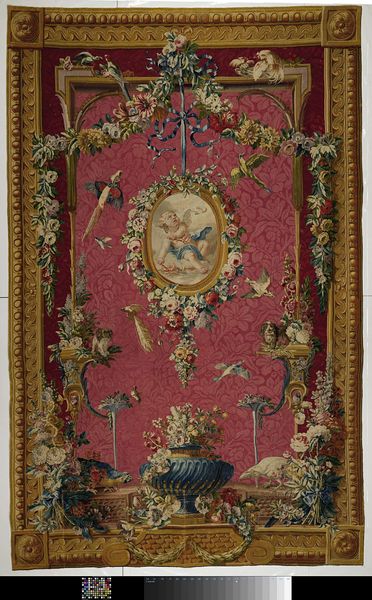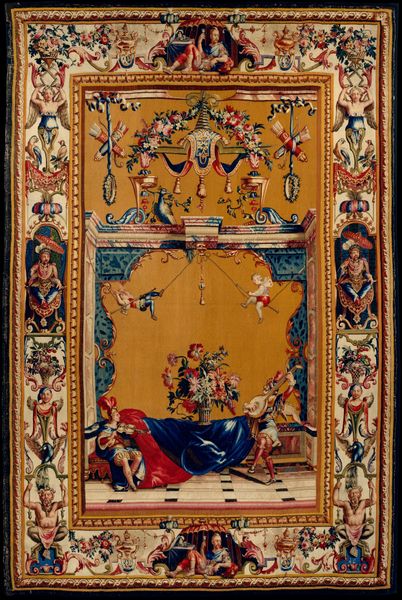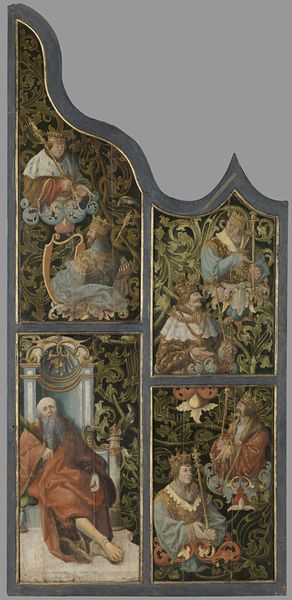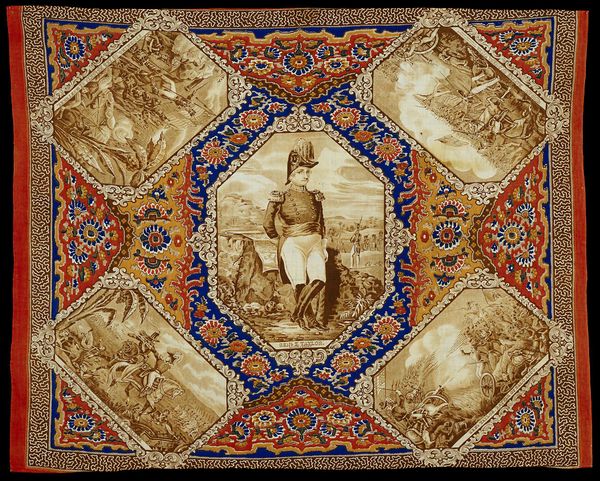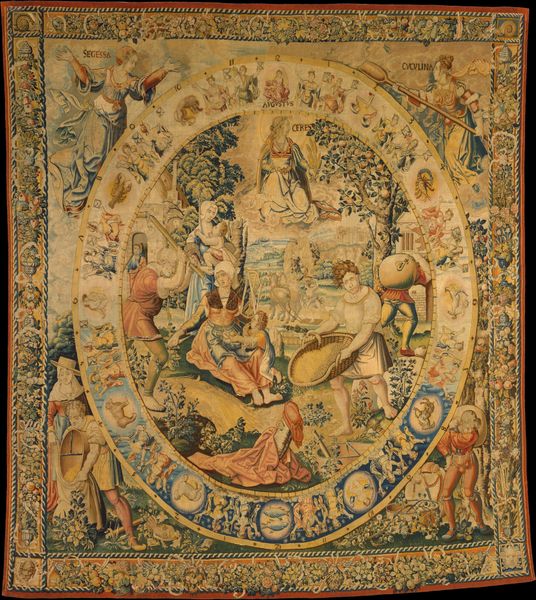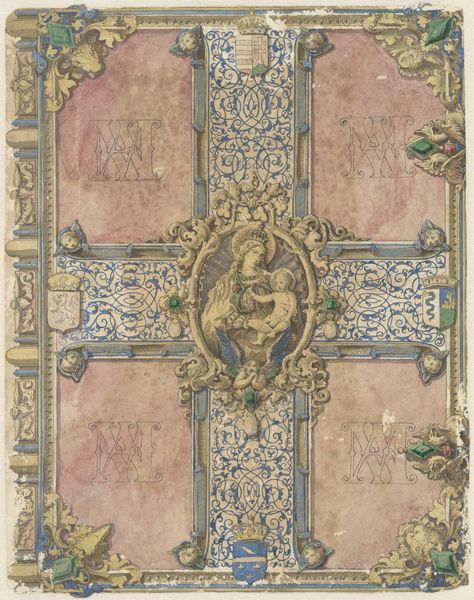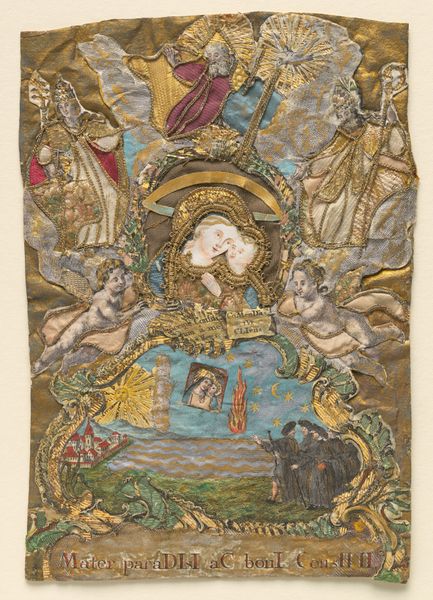
mixed-media, silk, textile
#
mixed-media
#
medieval
#
silk
#
textile
#
11_renaissance
#
handmade artwork painting
#
decorative-art
#
italian-renaissance
#
decorative art
Dimensions: 46 x 55 in. (116.84 x 139.7 cm)
Copyright: Public Domain
Editor: This textile, called a Dalmatic, dates back to the 16th century and it is a mixed-media piece including silk. Its jewel-toned color and detailed needlework give it an air of importance. How should we understand its imagery? Curator: Consider the circle at its center – the very form implies wholeness, divinity, eternity. Who do you see depicted there, and what might their story represent? Editor: It looks like a saint, maybe. It also reminds me of religious paintings from the Renaissance. Curator: Exactly. It's an embroidered panel portraying a biblical scene, most likely, set within elaborate scrolling foliate patterns that tap into earlier medieval traditions. How do these symbols connect with you, personally? Do they trigger any feelings, memories, or even questions? Editor: I think it projects power through the sheer skill of its craftsmanship. All of those details and gold threads evoke wealth, artistry and I suppose holiness, as it might be connected with Church. It seems designed to inspire reverence. Curator: The meticulous detail is deliberate, designed to impress the viewer with the wealth and artistry of the Church. What resonates is how these symbolic garments participate in a kind of visual storytelling. Editor: I hadn't thought of it that way, as telling a story through fabric and symbols. Thanks for expanding how I can approach a work like this! Curator: Indeed. Symbols allow for multi-layered understanding, linking this single garment to a vast and evolving historical and cultural narrative.
Comments
minneapolisinstituteofart almost 2 years ago
⋮
The rich, skillful embroidery on this dalmatic, or outer vestment worn by a Catholic deacon during Mass and other services, is characteristic of 16th-century Spanish liturgical wear. Its two roundels featuring Saint John the Baptist-as a child with the Madonna (seen here) and as an adult-would have connected the congregation with the celebrant who wore it. The presence of the saint on both sides suggests that it was made for a church that fostered a particular devotion to him.
Join the conversation
Join millions of artists and users on Artera today and experience the ultimate creative platform.
